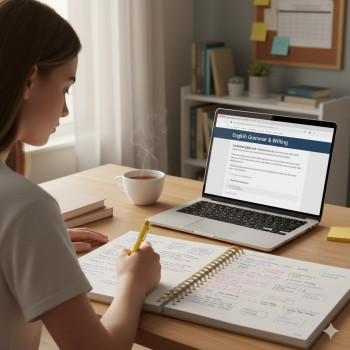Why tracking your SAT study time matters more than you think
Studying for the Digital SAT can feel like an endless loop of practice questions, review sessions, and the occasional panic before a full-length test. Time-tracking apps bring structure to that loop by turning vague intentions into measurable action. Instead of asking “Did I study enough?” you can answer “How many hours did I spend on targeted math practice this week, and how did my accuracy change?”
That kind of clarity matters for two big reasons: feedback and focus. Feedback shows you what’s working and what isn’t. Focus keeps you honest about your priorities—are you repeating low-value tasks like re-reading notes, or spending time on high-impact activities like scored practice tests and active review?
Picking the right time-tracking approach for Digital SAT prep
Time-tracking isn’t one-size-fits-all. Before you download an app or fire up a spreadsheet, decide the level of detail you want. Here are three approaches that students commonly use:
- High-level logging: Track only the big buckets—practice test, math, reading, writing, review. Low friction, good for weekly planning.
- Session-level tracking: Log each study session with tags (e.g., “Algebra—quadratics, 45 minutes, timed problems”). Best for spotting patterns and micro-improvements.
- Task-and-metrics tracking: Include accuracy, question types, and perceived difficulty alongside minutes. Ideal for students working with a tutor or a detailed study plan.
Which is right for you?
If you’re just getting started, begin simple. Track sessions for two weeks and see if your raw time correlates with score improvements on practice tests. If it does, keep the habit; if not, move to a detailed approach and start logging exactly what you did during each session. Many students pair time-tracking with weekly check-ins—alone or with a tutor—to keep the plan honest and actionable.
Tools of the trade: apps and techniques worth trying
There are many time-tracking apps and study-focused timers. You don’t need to use them all—pick one that fits your style. The important thing is consistency. Below are categories and why students pick them.
- Simple timers (Pomodoro apps): 25/5 cycles keep your brain fresh and build discipline. Great for study blocks like “reading passage + questions” or focused math practice.
- Analytics trackers: Apps that let you tag sessions and view weekly/monthly summaries. These are excellent for spotting trends—e.g., “I did 10 hours of writing practice but my score didn’t budge.”
- Habit trackers: For building daily rituals, like doing at least one timed passage or 20 minutes of vocabulary every day.
- Hybrid study planners: Combine scheduling, time logging, and task management so you can plan a session and then record what actually happened.
Study technique + timer = power combo
Pair an evidence-based study technique with a timer for the best results. For example:
- Pomodoro (25/5) for focused practice and review.
- Spaced repetition blocks for vocabulary or grammar rules, logged by minute, so you can track long-term retention time.
- Deliberate practice blocks—time only on weaknesses identified through previous practice tests, with each block tagged by topic.
How to structure your Digital SAT study dashboard
A dashboard is your study cockpit. It should show whether you’re spending time on high-value tasks and whether that time is translating into improvement. Below is a simple, actionable dashboard layout you can replicate in any app or spreadsheet.
| Metric | Why it matters | How to measure |
|---|---|---|
| Total study hours (weekly) | Shows effort baseline and helps set realistic targets | Sum of logged minutes each week |
| Hours by section | Reveals balance: Are you over-practicing one section? | Tag sessions: Math, Reading, Writing, Review |
| Practice test frequency | Practice tests give the most realistic feedback | Number of full-length tests taken per month |
| Timed practice ratio | Measures how often you practice under real test timing | Minutes spent on timed sections / total minutes |
| Accuracy by topic | Tracks progress on weak spots | Correct/attempted by tagged topic |
Weekly review ritual
Spend 20 minutes each Sunday reviewing your dashboard. Ask two questions: “What’s the biggest improvement this week?” and “Where do I need to reallocate my time next week?” Then set three concrete goals—e.g., two timed reading passages on Monday, three algebra sets on Tuesday, and a full practice test on Saturday.
What to track during a study session (practical checklist)
To make each minute count, track the following during every session. This doesn’t need to be long—just a line in your app or a quick entry in a notebook.
- Date and duration (start/end time)
- Primary focus (e.g., “no-calculator algebra”)
- Type of activity (timed practice, review, strategy, vocabulary)
- Score/accuracy if applicable (e.g., “8/10 correct”)
- One takeaway (e.g., “reviewed order of operations, need more practice with word problems”)
Short example log
“2025-09-10 — 45 min — Math: Geometry — timed problem set — 7/10 correct — takeaway: review circle theorems.” Small logs like this add up—after a few weeks you’ll see where your time converts into real score gains.
Turning time data into smarter study choices
Raw time doesn’t guarantee improvement. The trick is analyzing what that time produced:
- If you log lots of hours on reading but see no accuracy gains, try switching to targeted timed passages with explicit strategy practice rather than passive reading.
- If your math accuracy improves but scale scores on practice tests lag, begin simulating full sections under Bluebook-like conditions to build stamina and timing strategy.
- Use your logs to set focused micro-goals. For example, aim for a 10% bump in accuracy on algebra topic questions across three weeks by shifting an extra 60 minutes per week to deliberate algebra practice.
Sample study schedule that uses tracking to stay honest
This example assumes 12 weeks until your test. It balances full practice tests, targeted practice, and review, and ties each block to time-tracking goals.
| Week | Core focus | Tracked targets |
|---|---|---|
| 1–2 | Baseline: take 1 full digital practice test, identify weak areas | 10–12 hours/week; 1 full test; log topic accuracy |
| 3–6 | Intensive practice: alternate math and reading focus; timed sections twice/week | 12–15 hours/week; 2 timed sections/week; accuracy logs |
| 7–9 | Refinement: targeted drills on weakest topics; continued timed practice | 10–14 hours/week; weekly timed practice test sections; error-type tracking |
| 10–11 | Simulation: full-length adaptive practice tests in Bluebook and stamina work | 8–12 hours/week; 1–2 full tests/week; review logs |
| 12 | Polish & rest: light review, quick timed sections, strategy checks | 6–8 hours; low-intensity sessions; sleep & confidence tracking |
Real student scenarios: what the data can reveal
Here are three short, realistic portraits showing how time-tracking helped students make better decisions.
Case 1 — Maya: lots of hours, little progress
Maya logged 15 hours/week, but her practice test scores barely moved. Her tracker revealed most time was passive review—re-reading notes without practice. After switching to timed mixed sets and logging accuracy, her errors shifted from careless slips to conceptual gaps, which her tutor then targeted. Two months later, she gained 70 points.
Case 2 — Jamal: uneven section focus
Jamal saw steady math improvement but his reading section lagged. His dashboard showed only 20% of his time went to reading. He rebalanced his schedule, added two daily 30-minute timed passages, and after four weeks his reading score clawed up by 60 points.
Case 3 — Priya: tracking for burn-out prevention
Priya’s logs highlighted a string of late-night sessions before bed. Her accuracy dipped after 10 p.m. She moved key practice to morning hours and used short nightly review instead. Her scores recovered and she felt less burned out.
Using time-tracking data with personalized tutoring (where Sparkl’s fits)
One of the smartest uses of robust time data is bringing it to a 1-on-1 tutor. Tutors can read your logs and recommend course corrections you might miss. For example, if your analytics show strong accuracy but poor timed performance, a tutor can work on pacing strategies and test-day simulation.
Sparkl’s personalized tutoring can slot naturally into this workflow—your tracked logs provide your Sparkl’s tutor with clear evidence of where you’re spending time and how effective it is. With that insight, a Sparkl’s tutor can craft tailored study plans, assign the most valuable targeted practice, and use AI-driven insights to show which study activities will yield the biggest score gains. This saves time and reduces wasted effort.
Practical tips to keep your time-tracking habits healthy
- Make tracking as frictionless as possible. Use quick tags and one-line notes rather than long journals.
- Don’t obsess over perfect logging. Miss a session? Log an estimated duration and move on.
- Include rest and recovery in your dashboard. Sleep, mood, and breaks impact your efficiency—log them briefly.
- Review trends, not daily noise. Weekly and bi-weekly trends tell the true story.
- Be kind to yourself. A dip in productivity isn’t failure—it’s data you can act on.
Common pitfalls and how to avoid them
Students often fall into a few traps when they start tracking:
- Overtracking: Too many metrics can paralyze. Stick to three must-watch metrics: total hours, hours by section, and accuracy by topic.
- Confusing effort with progress: Hours alone don’t equal improvement. Always pair time with an outcome metric like practice test score or accuracy.
- Neglecting simulation: If you only do isolated practice, you won’t build the timing and stamina needed for full digital adaptive tests. Track and prioritize full-section, timed practice.
Quick-start checklist: get tracking in 30 minutes
- Pick your tool (timer + tagging app or a simple spreadsheet).
- Create tags: Math, Reading, Writing, Review, Full Test, Strategy.
- Set a weekly target (e.g., 10–12 hours) and one measurable goal (e.g., raise math accuracy by 8% in 6 weeks).
- Do a baseline practice test in Bluebook to record starting scores and topic weaknesses.
- Start logging every session for two weeks. Do a weekly 20-minute review and adjust the plan.
Measuring progress beyond the clock: what really moves scores
Time is necessary but not sufficient. The activities done during that time are the real levers for score change. Use your time-tracking data to prioritize:
- High-fidelity practice (full digital practice tests and timed sections).
- Targeted remediation (work on the specific question types that you miss most).
- Strategy refinement (stuff like passage triage for reading, calculator strategy for math).
Combining these with a tracker gives you a powerful cycle: practice → measure → analyze → adjust → repeat. If you’re working with a tutor—like those from Sparkl’s—this cycle becomes even faster because you get tailored feedback and an expert second set of eyes on your logs.
Final note: make tracking work for your life, not the other way around
Time-tracking apps are tools that should simplify decisions and reduce doubt. If the tracking system starts to feel like another chore, simplify it. The goal is consistent, honest feedback that helps you focus your efforts where they matter most. When used well, time-tracking turns scattered effort into a targeted plan—and that’s how students turn practice into real Digital SAT gains.
Parting homework (two-week experiment)
Try this two-week experiment: pick a simple timer + tagging tool, log every study session, and take one Bluebook practice test at the start and end of the two weeks. In your end-of-experiment review, answer these questions:
- Did my weekly hours increase or decrease? Why?
- Which activities gave the biggest accuracy improvements?
- What will I change next week based on these findings?
If you want to accelerate the process, bring your data to a 1-on-1 session with a Sparkl’s tutor. Their tailored plans and AI-driven insights can turn your time-log into a precision roadmap—so every minute you invest has maximum impact.
Ready to start?
Pick one simple tool, set a realistic weekly target, and begin. Treat the tracker like a friendly mirror that shows your habits without judgment. With steady measurement, sharp analysis, and occasional guidance from experts, your Digital SAT prep becomes less about guesswork and more about measurable progress. Good luck—you’ve got this.












No Comments
Leave a comment Cancel